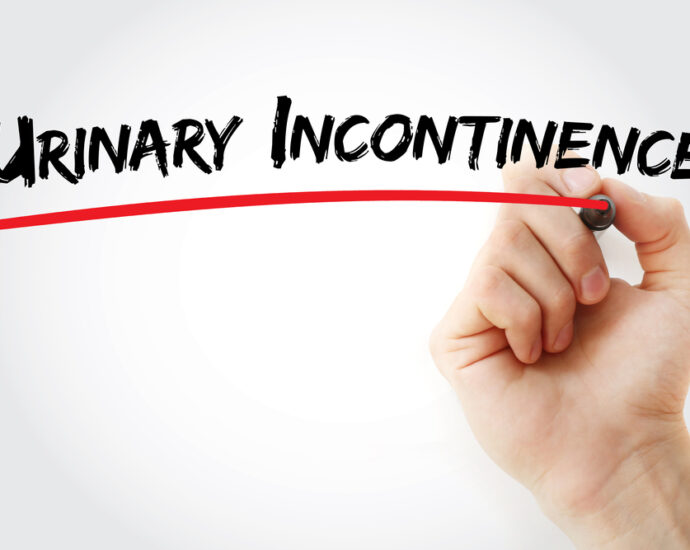Bladder incontinence, also known as urinary incontinence, is a common yet often under-discussed condition that affects millions of women worldwide. Whether it’s an occasional leak while sneezing or a sudden, uncontrollable urge to urinate, bladder incontinence can have a significant impact on a woman’s quality of life. Understanding the causes, different types, and available treatments is the first step toward managing the condition and restoring confidence.
This article provides an in-depth look at female bladder incontinence, exploring why it happens, how it’s diagnosed, and what women can do to take control of their bladder health.
Page Contents
What Is Bladder Incontinence?
Bladder incontinence refers to the involuntary leakage of urine. It can range from mild occasional leaks to severe and frequent accidents. While it can happen to anyone, women are more prone to it due to differences in anatomy, childbirth, and hormonal changes.
Studies suggest that up to 1 in 3 women experience urinary incontinence at some point in their lives, especially after pregnancy, during menopause, or with aging.
Types of Bladder Incontinence in Women
Understanding the type of incontinence is crucial for finding the right treatment. The main types include:
- Stress Incontinence
This is the most common type among women. It occurs when physical movement or pressure—like coughing, sneezing, laughing, or lifting heavy objects—puts stress on the bladder, causing leakage.
Causes: Weak pelvic floor muscles, often due to pregnancy, childbirth, or age.
- Urge Incontinence (Overactive Bladder)
Characterized by a sudden, intense urge to urinate followed by involuntary leakage. Women may find themselves needing to go frequently, including at night (nocturia).
Causes: Bladder muscle overactivity, neurological conditions, infections, or unknown triggers.
- Mixed Incontinence
A combination of stress and urge incontinence. Many women experience both types simultaneously, especially after childbirth or menopause.
- Overflow Incontinence
This occurs when the bladder doesn’t empty completely, leading to dribbling. It’s less common in women but can occur due to weak bladder muscles or blockages.
- Functional Incontinence
Caused by physical or mental impairments that prevent timely bathroom visits—common in older adults with arthritis, dementia, or mobility issues.
Causes and Risk Factors
There are several factors that contribute to bladder incontinence in women:
- Pregnancy and Childbirth: Vaginal delivery can weaken pelvic floor muscles and damage nerves.
- Menopause: Estrogen decline can thin the lining of the urethra and affect bladder control.
- Age: Aging affects muscle tone, bladder capacity, and nerve sensitivity.
- Obesity: Extra weight puts pressure on the bladder.
- Smoking: Chronic coughing and reduced muscle strength can worsen symptoms.
- Chronic Conditions: Diabetes, multiple sclerosis, and spinal injuries may interfere with bladder function.
- Pelvic Surgery: Surgeries such as hysterectomy can affect pelvic floor support.
Diagnosis and When to See a Doctor
If urinary incontinence is impacting your daily life, it’s time to speak to a healthcare professional. Diagnosis typically includes:
- Medical History: Review of symptoms, lifestyle, medications, and childbirth history.
- Physical Examination: To assess pelvic muscle tone and rule out other conditions.
- Urine Tests: To detect infection or blood.
- Bladder Diary: Recording urination habits, volume, and leakage.
- Urodynamic Tests: To measure bladder pressure and function, if needed.
Early diagnosis leads to better treatment outcomes and may prevent the condition from worsening.
Treatment Options for Bladder Incontinence
The good news is that bladder incontinence is treatable—and often curable. Treatment depends on the type and severity of symptoms, and often includes a combination of methods.
- Lifestyle Changes
- Bladder Training: Gradually increasing the time between urinations.
- Timed Voiding: Going on a schedule rather than waiting for the urge.
- Fluid Management: Limiting intake before bedtime and avoiding bladder irritants like caffeine, alcohol, and spicy foods.
- Weight Loss: Even modest weight loss can significantly improve symptoms.
- Pelvic Floor Exercises (Kegels)
Strengthening the pelvic floor muscles can prevent and reduce leakage, especially in stress incontinence.
How to do Kegels:
- Identify the right muscles (the ones used to stop urine flow).
- Contract and hold for 5 seconds, then relax for 5 seconds.
- Aim for 3 sets of 10 reps per day.
- Medications
Certain medications help relax the bladder or reduce urgency. Common options include:
- Anticholinergics (e.g., oxybutynin, tolterodine)
- Beta-3 agonists (e.g., mirabegron)
- Topical estrogen (for postmenopausal women)
- Medical Devices
- Pessary: A vaginal insert that supports the bladder for stress incontinence.
- Urethral inserts: Small disposable devices inserted into the urethra to prevent leaks during physical activity.
- Injections and Surgery
- Botox: Injected into the bladder muscle to reduce overactivity.
- Bulking Agents: Injected near the urethra to help it close properly.
- Sling Procedures: Surgical placement of a mesh sling to support the urethra.
- Bladder Neck Suspension: Surgery to lift the bladder and urethra into proper position.
These options are usually recommended when conservative treatments haven’t worked.
Coping and Support
Living with bladder incontinence can be emotionally challenging, but you’re not alone. Here are a few tips:
- Use Absorbent Pads or Protective Underwear: Today’s products are discreet and comfortable.
- Talk About It: Open communication with your healthcare provider or a support group can reduce the stigma.
- Track Triggers: Identifying foods, activities, or medications that worsen your symptoms can empower better control.
Final Thoughts
Bladder incontinence is a common yet treatable condition that many women face. Whether you’re dealing with leaks after childbirth, urgency in menopause, or other symptoms, there are effective steps you can take. From simple exercises and lifestyle changes to medications and surgical options, help is available.
Don’t suffer in silence—talk to your doctor, explore your options, and take proactive steps to improve your bladder health and quality of life. With the right support, you can regain control and confidence.
READ MORE: Overactive Bladder Medications
Sources:
https://www.nhsinform.scot/healthy-living/womens-health/middle-years-around-25-to-50-years/pelvic-health/urinary-incontinence-in-women/
https://www.mayoclinic.org/diseases-conditions/urinary-incontinence/symptoms-causes/syc-20352808
https://www.urologyhealth.org/urology-a-z/u/urinary-incontinence
